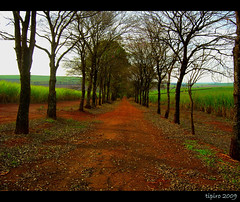- in Have Fun by Alexis Rodrigo
Early Springtime Observations
I don’t know about you, but the toddler and I can’t wait to get out more often as the weather warms up. Observing the arrival of spring is such a delightful activity.
With spring right around the corner, now is a good time to teach your children some of the interesting changes that are taking place this time of year.
Spring is brief – there is a rather short window in which to observe spring’s changes, so some planning is required to capture these changes. Here are some ideas to get you started in your nature observations this spring.
Find a spot to observe.
[ad#ad-2]This can be done in your own yard, and it does not have to be a large area. It can be just one square foot or a whole garden, but it should be a low-traffic area so that you are observing nature and not someone’s gardening efforts. You also don’t want people walking over your natural area.
Once you choose the spot, note how it looks the day you begin your observations.
Use a digital camera or garden journal (or a combination of the two) to record details about what you see. If you enjoy drawing, you and your children can make sketches of the area. Some questions to ask as you begin your observations are:
- Is the soil muddy, dry, sandy, etc.?
- Are there moss or rocks present?
- Are there any plants present at all, such as grass or weeds?
Visit your area daily.
If you like, set up a chair or bench nearby. Using your recording methods, sketch, photograph, and take notes on any changes you observe. If birds or other animals visit the area, note that as well as any changes in plants or soil. (Don’t be tempted to put out food to attract animals, however – you are just observing, not interfering.) Even if you don’t note any changes, write that down as well.
Consider getting a field guide to the plants and wildflowers in your area.
Identify the various plants as they grow. If the plants bloom, note when they bloom and for how long, and write down the species if you and your children identify it.
Your children will become attuned to small details in their special spot, a skill that is applicable in other areas of life. You will all be surprised at how much change occurs in nature over a short period of time, even though it is gradual.
When spring turns to summer, go over your observations and see how much the original spot has changed. The beauty of observing carefully is that you are making note of details not discerned in just random, passing glances. You will see the gradual greening of the spot, the blooming of flowers, and changes in the soil from dry to wet, or from packed to loose. This can be a special, annual activity for your whole family.
I suggest you keep your photos and/or drawings in a notebook. Create a new notebook each year, or compile your yearly observations in one large sketchbook. It will make a wonderful memento of the time you spent with your child, learning about the wonderful world around us.
If you’d like to keep a nature journal, I suggest Nature Journal by Clare Walker Leslie.
If you liked this post, submit your email address below to get new posts by email:

